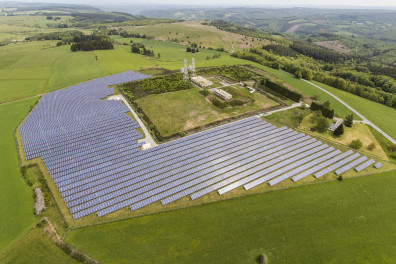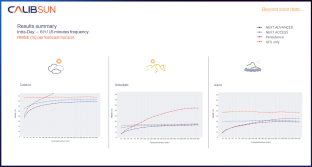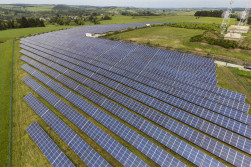Decarbonizing energy: Market key figures & forecasts
 1 May 2023
1 May 2023
 1 May 2023
1 May 2023
Key figures to end 2022
The solar energy market has experienced remarkable growth in Europe and worldwide. Solar power totals 1034 GW, rising to 191 GW in 2022 The SolarPower Europe association estimates that photovoltaics in Europe will have increased by 47% in 2022, from 28.1 GW in 2021 to 41.4 GW.
On a global scale, solar power capacity has expanded rapidly. According to the International Energy Agency (IEA), photovoltaics should account for 2,350 GW of power worldwide within four years, surpassing hydropower in 2024, natural gas in 2026 and coal in 2027 in electricity generation.
"Solar power is expected to become the leading source of electricity generation by 2035." (IAE)
The European Union aims to achieve a renewable energy consumption of at least 32% by 2030, rising to 50% by 2050. With solar energy playing a crucial role in achieving this goal, government policies are conducive to the development of photovoltaic installations. Many European countries have introduced feed-in tariffs for solar power producers, to encourage investment in solar projects.
By 2022, Germany leads the way with 7.9 GW installed, followed by Spain with 7.5 GW and Poland with an additional 4.9 GW. France, below target, has installed 2.7 GW.
Growth factors in the solar energy market
- Energy transition targets for Europe
The European Union (EU) is at the forefront of the energy transition, with ambitious targets set as part of Europe's "Green Deal" to achieve carbon neutrality by 2050. The main energy transition targets are directly correlated with the rise of photovoltaics in the global energy mix.
- Decentralized energy production
The encouragement of decentralized energy production, with energy self-reliance objectives in a tense geopolitical context and rising energy costs, as well as the need to ensure supply despite growing energy needs. Solar energy is the most viable solution for giving manufacturers, individuals and communities the ability to produce their own renewable energy using locally installed panels.
- Grid integration and flexibility
Efforts are being made by grid operators to improve infrastructures to incorporate a greater share of intermittent renewable energy sources such as solar power. In addition, efforts to improve and adopt energy storage systems are helping to make solar power more profitable, while mitigating its variability.
- Lower PV costs, rising of other energy prices
The cost of solar panels has decreased considerably over the past few years, making solar energy more affordable and competitive compared to conventional energy sources. At the same time, energy prices have been rising steadily since 2021, encouraging manufacturers, municipalities and individuals to switch to cost-effective, easy-to-implement PV self-consumption.
- Technological advances
Ongoing research and development efforts have improved the efficiency of solar panels, energy storage solutions and the integration of this intermittent energy into the grid. In particular, technological advances have boosted the viability of solar power through more accurate solar resource forecasts and improved decision-making, thanks to energy management systems.
Solar power ramping up worldwide
Beyond Europe, energy transition objectives are being pursued on a global scale. Many countries have set renewable energy targets to reduce dependence on fossil fuels and mitigate climate change. Global renewable energy capacity has risen by 9.6%, adding 295 GW by 2022 for a total of 3,372 GW.
Solar power is set to play a major role in achieving these targets, with China and India leading the way with numerous projects. Indeed, Asia, and especially China, the world's leading manufacturer of solar panels, has a production capacity of 1,630 GW, or 48.3% of global capacity.
While hydraulic power is in the lead, with 1,250 GW of capacity and a 2% increase between 2021 and 2022, it is solar and wind power that are developing more rapidly. They will account for 90% of new renewable energy installations worldwide by 2022, 59% of which will be in Asia.
- Solar power totals 1,034 GW, with an increase of 191 GW in 2022.
- Wind power will account for 906 GW in 2022, with 78 GW of new capacity in 2022.
Several countries are giving priority to gradually phasing out coal-fired power plants and decreasing their dependence on fossil fuels, with a view to transitioning to cleaner energy sources such as solar power. RE accounted for 30.5% of total electricity production worldwide in the first half of 2022 (+3 vs. same period in 2021), and this figure should continue to rise in order to comply with international agreements such as the Paris Agreement, which set targets for reducing greenhouse gas emissions.
SOURCES
WWEA / IRENA / EMBER / BloombergNEF / GWEC market intelligence / AIE


 en
en 
 fr
fr es
es de
de



